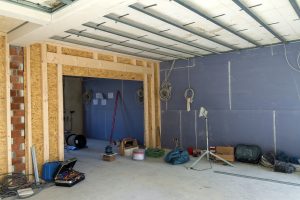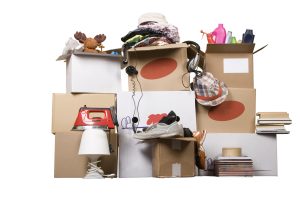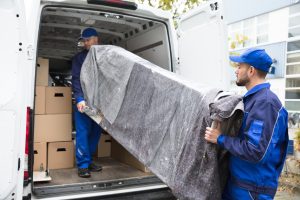Category: moving home
You’re moving out of your parent’s house and into your first home or maybe you are moving into Uni halls… but you don’t know what to take and what do you leave? Don’t worry, you are not alone! We can guarantee that everyone has had to think about the ‘what do I take with me’ problem!
You might be thinking about all the new things you can get for your home, but you’ll soon find your parents on the doorstep with a car full of your childhood toys and teenage clutter. You might not see the need for them now, but one day you may well treasure those memories. So, what sort of thing should you hold onto and what should you let go?
Things to keep
Family photographs
You may not be that interested in pictures of yourself playing on a beach you don’t remember age 3 – but one day you’ll find yourself wanting to know more about your parents holidays before you were born, or your grandparents wedding. Go through them with your parents, and have them write down who each person is on the back, so you have the information when you want it.
Old toys
Just like clothes, toys often come back into fashion as trends renew. Marvel figurines, Matchbox cars, Furbies, Tamagotchi and Pokemon cards have all come back around as must have toys over time. If you are still holding on to original versions of these, they may well increase in value. The last thing you want to do it is throw out all of your childhood toys now, only to discover you had a rare and valuable Barbie. And even if they aren’t worth anything, your own children may enjoy playing with them in time.
School reports and pictures
You may have skipped out of school on the last day, glad you never have to think about it again. Perhaps you won’t for years. But then you’ll have a school reunion, or bump into someone you knew, and you’ll want to peek back at the memories.
Awards, certificates and trophies are all nice to keep, but perhaps one of the best things, though you might not think it now, as your school reports. In 20 years time these can be a great source of entertainment, although you might want to hide the teacher’s comments from your own children.
Things to recycle
Clothes
There may well be some favourite clothes you just can’t bear to leave behind: a snuggly hoodie or band T-shirt. But the majority of clothes you wore as a teen probably don’t need to go with you to your new home. Sort out the ones that no longer fit, or are a bit too worn, and see what you can give to charity.
Books and magazines
We certainly do accumulate a lot of paper in our lifetimes. But do you really need to keep it? Take a look at your bookshelves, and see which treasured paperbacks you are really likely to read again, and which ones you have outgrown. Comics and magazines are the same. It’s all extra weight.
Finding space
Now you’ve decided what you need to keep, you still might not have space in your new place for all the boxes. Don’t throw things out just because you can’t find a cupboard for them, if you know you’ll regret it one day. With your own small self-storage locker, you’ve got just enough space for your childhood treasures, secure and dry, until you’re feeling nostalgic.
Still not sure how much space you need? Call us on 0121 250 5055 and we’ll talk through your requirements and design the perfect package for you.
Moving house is a momentous occasion that we all face at some point in life, whether that is to head off to university or to leaving home to live with friends or partners. As exciting as it seems starting out, merging the possessions of two or more people can prove to be more than a little problematic. When faced with a choice of three sofas to sit on or duplicate dining sets, new cohabitants may feel pressed to part with their treasured possessions, so to avoid any awkward moments and make moving house hassle-free, simply use self-storage
Get Organised
It sounds so simple, but making a plan and getting organised early will help you immensely on your moving day. Keep a few essentials such a your kettle, mugs, tea bags and a spoon in a box on the front passenger seat of your moving vehicle (trust us you will thank us later!)
Have a system of what you need to move first and what can come later; bed first, bag of clothes you haven’t warm in a year… that can come last!
Give yourself space
Using self-storage simplifies a house move as it means that you don’t have to make any rash decisions about what to keep straight away. Perhaps more importantly, however, it gives you time to get a feel for the style that you want in your new pad, not to mention an idea on the best layout to maximise the space in your home.
Yes, you may be utterly convinced that your three-piece leather suite and chaise longue are perfect for parties, however if your goods are going to monopolise the room, then it is better to consider the home without them in it. Furthermore, you will avoid an unnecessary 22-point turn to get the furniture in through the front door.
Give yourself time
By storing your items in a secure self-storage unit, you remove the time constraints of trying to exchange and complete in a day whilst carting your worldly goods across the town. Few house sales complete at a weekend, meaning that you will need to take time off work to pack, ship and unpack your belongings within a very short time frame. By using flexible self-storage, you will be able to move in to your new home at a time and pace that is convenient to you.
Give yourself a good talking to
If there is one thing we all know, it is that as we travel along the journey called life we accumulate more than a few souvenirs along the way. Gathering together your belongings to move house can be a wake-up call as to just how much stuff you have, and now is the time to give yourself a good talking to about what needs to stay and what needs to go.
Rather than transfer all these items into your new abode or make any on the spot decisions that you later regret, use self-storage to filter these items gradually, and get rid of anything non-sentimental that hasn’t been used in 6 months.
This really simple lesson, saves many moving day tears! Your new home is going to be filled with new memories and sometimes, you just need that little bit of help to let go of items that you really don’t need anymore.
Enjoy the day
It is going to be hard work and there are most probably going to be some bumps along the way, but when you can sit back at the end of the day and look at your new home you will find that all those worries you have 6 months ago are totally irrelevant now!
For more help, head over to our page to see how we can help you with your move.
Happy moving Everyone!
It’s that time of the year to start spring cleaning, and it’s a task many of us dread.
There are plenty of great ways to reduce the effort though, so we thought we’d save you some time and scour the internet for the best in cleaning tips using some natural home ingredients.
Sparkling windows
You can buy all sorts of cleaners that work specifically on the glass in your house. Or you can save some pennies, and use a simple solution of 50% white vinegar and 50% water. Wipe with a newspaper or cloth for sparkling windows.
Picking up pet hair
We love the furry members of the family, but we’re less keen on the hair they leave on the furniture. There are a number of ways to pick hairs up, including a trusty lint roller, but our favourite is to simply use a pair of rubber gloves. Just run your hands over your sofa, and the friction will cause the hairs to stick to the gloves.
Cleaning limescale from taps
Limescale build up leaves a white deposit on your taps, in kettles and washing machines. Scrubbing it away can take a lot of time and elbow grease – but we’ve found a simple trick that takes all the effort away.
Limescale dissolves in a mild acid, such as the citric acid of a lemon. So, cut a lemon in half, wedge it gently onto the end of your tap and leave it for an hour or more to loosen and dissolve any deposits, while you move onto another chore.
Freshen up your mattress
You may think that one of the hardest things in the house to clean is your mattress, but it’s really one of the simplest. All you need is some bicarbonate of soda, and a sieve. Sieve the bicarb over the whole mattress, and leave for several hours. The soda will draw out any dirt, moisture and odours, without damaging the mattress. Finally, hoover up the powder thoroughly and you’ll be left with a fresh, clean smelling bed.
Microwave your lemons
Another top tip using the lovely lemon – squeeze some juice into water and put it in the microwave for a minute. The steam will loosen any food stuck to the inside for an easy wipe, while the lemon leaves it smelling lovely and clean.
Clean out your drains
Our drains can become blocked with hair and soap, but there is an easy way to clean it out and keep on top of any build up. Pour half a cup of bicarbonate of soda down the drain, followers by 1 cup of white vinegar, and leave it for 30 minutes. Then flush down some fresh clean water and you’ll have lovely clean drains.
Fresh and fragrant
Finally, leave your home smelling beautifully fresh with these simple tips. Add a few drops of fabric conditioner to a dry wipe and leave it behind your radiator. As it warms the fragrance will spread across your room. And there – a lovely, clean and fresh home, ready for the year ahead.
We hope that you enjoy these easy at home tips, and enjoy a fresher cleaner life. Happy cleaning!
The market is starting back up, viewings are happening and houses are selling. If your house has sold and you are preparing for moving day, you probably already have a lot on your mind. So, make moving day a little less stressful with our top tips.
Start packing early.
Unless you live in a very small bedsit, you likely have a lot more stuff than you realise to pack. So don’t leave it till the last minute. Start packing early, tackling one room at a time, and label every box clearly so you know what to unpack first and what can wait for a while while you settle into your new home.

Make a moving day list
There is a lot to remember on moving day, from turning off any services and cancelling the broadband to giving your new address to the neighbours. Always do one last walk through before you close the door, and remember to post the keys through the letterbox.
Charge up all your devices
Make sure your phone is fully charged for the day, and that you have the number for your movers, the sellers of your new home and the estate agents, in case there are any last-minute panics.
If you have children with you, make sure their devices are charged too. You might plan on having them help you move in if they are old enough, but in the end it may just be easier to keep them occupied.

Arrange pet care
Much as we love the furrier members of the family, having the dogs and cats underfoot while you move in will add to your stress, especially if they get out and lost before they know the way around their new home. So arrange to put them into pet care or ask a friend to look after them while you unpack, and introduce them to their new home once you have finished unloading the van.
Plan for your first night
Moving day is a long and tiring event. Plan ahead for the essentials – a nice hot cuppa. Prepare a box of essential items that you’ll want immediate access to. The kettle, mugs, coffee and milk, a spoon, and toilet roll.
Don’t forget to feed yourself and the family too. Prepare some sandwiches and snacks for the day time, and a meal for dinner. By the time you’ve settled in, you may not feel like cooking or heading out for a takeaway.

Set the beds up first
The first piece of furniture you need to set up are the beds. After a day of hauling boxes you’ll feel much better when you know you can climb into a clean bed at the end of the day and get a good night’s sleep.
Only take what you need
If you are moving a family-sized amount of furniture and belongings, it may be more than you can face in one day. Renting a self-storage unit for the short term will make your move a lot faster and easier.
Pack away the heavier and bulky items, the clutter from cupboards and seasonal décor, and leave it all in storage until you’re settled in. You can collect the rest from your unit when you are ready for it, and once you’ve decided where in your home you are ready to put it.
Take the stress out of moving day by planning ahead. As the evening arrives you’ll be all settled in for the evening and ready for your dinner and a glass of wine.
It may have started in America, but as with many things, self-storage is rapidly becoming more popular in the UK. More and more storage providers are opening for business and, according to the SSAUK, approximately 13% of households have used self-storage at some point.
With increasing numbers of homeowners and commercial businesses turning to self-storage as a simple and cost-effective solution to their storage needs, here’s a look at some of the more common reasons they do.

More bedrooms in the home
If you are expecting a new baby, you’ll need to turn your home office into a safe haven for tiny fingers. But you won’t want to get rid of the existing furniture – before long your baby will be moving back into big sized beds and wanting desks of their own.
Home office to work office
Talking of your home office, as your business expands you don’t want to keep boxes of stock in your house and taking over your hallways. The downside of working from home is that you can never quite escape it – but having a small office set up in your own storage unit keeps costs down, and your home life separate.
Moving house
When you are moving home a temporary bit of storage can come in useful. Declutter your current home and stage it for a quick sale, or store all your excess stuff until you are settled in to your new home and you’re ready to unpack at leisure.

A secure place for your tools
If your business depends on your equipment, it’s vital that you keep it safe and secure. Keeping tools in your van is risky, when one burglary later and you have not only lost expensive gear, you may well lose a few days work as well. Keeping tools in self-storage gives you a well-protected lock up and a place to repair, clean and maintain your tools as well.
Merging homes
You may be moving in with your partner, or your elderly relatives may be moving in with you. Either way, that’s two houses full of furniture, beds, kitchen utensils, plates, books, and bedding that need sorting through and thinning out. Using self-storage to keep things in means you don’t have to get rid of anything you love but have no space for, and you can take your time in dealing with the rest to get the best deals.
Seasonal storage
There are certain times of the year when you need to boost your stock – Christmas being the obvious one. Making sure you are ready for seasonal sales means ordering in additional products. With more room you can get more than you need, so you don’t have to turn down sales. Short term storage contracts make the perfect solution – your home or shop remains uncluttered, and your boxes don’t get crushed and damaged in small spaces.

Renovating your home or office
From simple redecorating to knocking down walls and remodelling rooms, renovating always creates a lot more mess than you expect. Move all your furniture or important office equipment out of the way for the duration, and you’ll avoid paint on your sofa or damage to your printer.
At Cookes Storage our units are available in a variety of sizes and with short and long term flexible contracts, so that you only pay for the space you need, for as long as you need it. With CCTV, PIN code entry and indoor units, you have all the security and protection you need to keep your stuff dry, safe and secure.
If you haven’t considered self-storage until now, let’s talk. We have all the space you need.
You’ve rented your storage unit, you have a van full of much-loved furniture and precious heirlooms – and now you need to put it all in your unit. It sounds simple, but it is worth putting a little forethought into how you use up your space.
Here’s just some of the things you need to consider when you’re unpacking your van.

Plan what you’ll need in advance
How you stack your storage until will depend on what you intend to use it for. If your unit is an extra cupboard, a place to keep your Christmas decorations, seasonal sports gear or garden tools, you might want some racking installing to help keep things organised and accessible.
If you do without racking, then put the items you use most frequently towards the front of the unit, to save having to lift everything out of the way each time you want to get in.
If you plan on long term storage of your furniture, plan on putting the heaviest and largest items of furniture in first. That way you can carefully pile smaller boxes and fragile items on top of the furniture, keeping them from being crushed and making the most of your room.
However, customers in the middle of a house move may find it easier to put the largest items of furniture in last. That way, when you open your storage unit they are right at the front, ready to go into the removals van first. If you are moving in a couple of trips, this also means you can get all the furniture into your new home and in place, before returning for your small items.
Take care of your sofa
One of the things we see most often is damage caused to items that are badly stored. You might think that standing your sofa on end in the unit is a great way to make the most of your available space. However, take a look at your sofa arms first. Are they strong enough to take all the weight for a long time?
If you do plan on stacking your sofa on end, wrap the arms in cardboard to protect them from scratches r fabric tears and stains. The space you save in the short term is not worth the cost of damaging your expensive sofa.
Wrap and protect your furniture
Protect the surfaces of your larger items as well. Taping some cardboard onto table tops before you pile your boxes on will help prevent marking.
Make sure you place furniture the right way up. If you stack your table upside down, or lean it against the wall without care, you could end up with scratches that are visible for ever more.
Use some bubble wrap to cover sharp corners. It will stop them being knocked as they are carried from van to unit.

Use strong boxes for smaller items
There’s a tendency to grab any old cardboard box to store our smaller items – often saved from deliveries to our homes. However, using purpose made storage boxes may save you some cracks and breakages.
Large cardboard boxes may not be so strong in the centre, particularly when overfilled with heavy items and stacked in a pile. Using the same sized boxes will also make piling things up a little easier – no balancing unstable pyramids in your unit.
Don’t forget to label your boxes so you know where everything is – and so you can place fragile items at the top of the stack.
Make use of the space
Make sure you make the most of the height of your unit. Careful planning will ensure that boxes can pile up high without falling, and furniture can be stood on top of each other as long as it’s done carefully.
It’s very easy to over or underestimate the space you’ll need for your furniture and boxes. Our team are able to advise you on the size unit you need, so that you are not left with a mass of unneeded floor. A badly packed unit can mean you leave plenty of unused space that you cannot access, and the need to rent a second unit, which could have been avoided.

Choose a reputable moving firm
If you choose to use a moving firm, take your time in choosing the right people. Don’t assume they will wrap your furniture before placing it in your unit – it’s best to do it yourself first.
Cost is also not always the most important consideration – if the firm you choose is rushing, they may take less care in placing items in your unit. This means more chance of damage and less care in using the space wisely.